A Degraded Finger Vein Image Recovery and Enhancement Algorithm Based on Atmospheric Scattering Theory
Abstract
1. Introduction
- (i)
- We improve the gamma transform method for use in the conversion of gray values of finger vein images. According to the image gray level requirement, the image gray value is normalized to within a specific threshold value. It is used to improve the gray level difference of pixel points at the vein edges. This method avoids the problem that gray values cannot be reconstructed in the next step because they exceed a fixed threshold;
- (ii)
- The main points of the image gray value reconstruction method designed in this paper include (1) proposing image local-region light intensity for eliminating the differences in incident light intensity between different regions due to different tissues and skeletons. (2) Designing a pixel mutation filter to solve the problem of different absorption rates of light intensity in local regions, and realizing the segmentation of vein and non-vein regions. We combine the above method points with the atmospheric scattering theory formula to realize finger vein image gray value reconstruction;
- (iii)
- The homomorphic filtering technique is introduced to globally normalize the image by decreasing the gray value of the high-frequency components in the vein regions and increasing the gray value of the low-frequency components in the non-vein regions. This can further improve the contrast of the image.
2. Related Works
2.1. Finger Vein Image Enhancement Based on Optical Features
2.2. Finger Vein Image Enhancement Based on Texture Features
2.3. Finger Vein Image Enhancement Based on Deep Feature
3. Image Recovery Model
- (i)
- Scene imaging in atmospheric systems is an incident imaging mode. The pixel values of the image are derived from light reflected from the object and atmospheric light from the environment. The atmospheric light in the environment remains essentially the same without interference, which is the key to the de-fogging algorithm. Therefore, the foggy image is affected by the severe scattering caused by the fog. However, a particular scenario is affected to the same degree. Finger vein imaging is a type of transmission imaging. The pixel values of the image are derived from the attenuation of a beam of light after it has passed through the finger. And the gray value of each pixel point is affected by the surrounding area. The degree of influence of the light is related to the light intensity and distance of the surrounding area. This means that different pixel locations are affected differently.
- (ii)
- Imaging environments have different scene depths. Imaging within atmospheric systems has a wide field of view. Therefore, the atmospheric scattering coefficient of a scene can be calculated based on the wavelength and scene depth. Finger vein imaging environments have a camera distance of less than 10 cm from the finger NIR light source. The effect of different regions cannot be described simply by a fixed function.
- (iii)
- In an atmospheric imaging system, the intensity of the light arriving at a scene is the same. It is absorbed by the scene points and reaches the camera. The finger vein device uses a string of LED light beads to provide near-infrared light. The intensity of the light entering the finger is different due to the different positions and thickness of the finger. And since the finger veins are not distributed in a single plane, the light intensity reaching different finger veins also varies.
- (1)
- Due to the more complex organization within the finger, different regions have different attenuation rates. However, as the region gets progressively smaller at each successive pixel point, the attenuation rate within each region is approximately the same. This value can be considered as a constant.
- (2)
- In the finger vein image, the gray value of the vein region in any small area is smaller than the gray value of the non-vein region. And there is a continuous gradient change in the gray value connecting the vein region and the non-vein region. These features are maintained even in heavily degraded finger vein images. Therefore, in a region larger than the width of the finger vein, when the gradient of the gray value changes continuously and exceeds a certain threshold, it can be recognized that there are both vein regions and non-vein regions. Conversely, it is possible in this scenario that there are only non-vein regions.
4. Image Recovery Algorithm
4.1. Grayscale Value Quantization
4.2. Image Enhancement Based on Atmospheric Scattering Theory
4.2.1. Calculation of the Absorption Rate ε
4.2.2. Calculation of the Area Light Intensity A
4.3. Global Image Normalize
5. Experimental Results and Evaluation
5.1. Ablation Experiment
5.2. Experimental Results of Different Finger Vein Image Enhancement Algorithms
5.3. Experimental Results of Different Optical Feature-Based Image Enhancement Algorithms
6. Conclusions
Author Contributions
Funding
Institutional Review Board Statement
Informed Consent Statement
Data Availability Statement
Acknowledgments
Conflicts of Interest
References
- Ma, B.; Wang, K.; Hu, Y. Finger vein recognition based on bilinear fusion of multiscale features. Sci. Rep. 2023, 13, 249. [Google Scholar] [CrossRef]
- Hu, N.; Ma, H.; Zhan, T. Finger vein biometric verification using block multi-scale uniform local binary pattern features and block two-directional two-dimension principal component analysis. Optik 2020, 208, 163664. [Google Scholar] [CrossRef]
- Qin, H.; He, X.; Yao, X.; Li, H. Finger-vein verification based on the curvature in radon space. Expert Syst. Appl. 2017, 82, 151–161. [Google Scholar] [CrossRef]
- Yang, J.; Shi, Y. Finger-vein network enhancement and segmentation. Pattern Anal. Appl. 2014, 17, 783–797. [Google Scholar] [CrossRef]
- Lee, E.C.; Park, K.R. Restoration method of skin scattering blurred vein image for finger vein recognition. Electron. Lett. 2009, 45, 1074–1076. [Google Scholar] [CrossRef]
- Lee, E.C.; Park, K.R. Image restoration of skin scattering and optical blurring for finger vein recognition. Opt. Lasers Eng. 2011, 49, 816–828. [Google Scholar] [CrossRef]
- Yang, J.; Zhang, B.; Shi, Y. Scattering removal for finger-vein image restoration. Sensors 2012, 12, 3627–3640. [Google Scholar] [CrossRef]
- Guo, X.; Li, D.; Zhang, H.; Yang, J. Image restoration of finger-vein networks based on encoder-decoder model. Optoelectron. Lett. 2019, 15, 463–467. [Google Scholar] [CrossRef]
- Zhang, W.; Zhou, L.; Zhuang, P.; Li, G.; Pan, X.; Zhao, W.; Li, C. Underwater image enhancement via weighted wavelet visual perception fusion. IEEE Trans. Circuits Syst. Video Technol. 2024, 34, 2469–2483. [Google Scholar] [CrossRef]
- He, K.; Sun, J.; Tang, X. Single Image Haze Removal Using Dark Channel Prior. IEEE Trans. Pattern Anal. Mach. Intell. 2011, 2341, 2353. [Google Scholar]
- Lee, H.S.; Moon, S.W.; Eom, I.K. Underwater image enhancement using successive color correction and superpixel dark channel prior. Symmetry 2020, 12, 1220. [Google Scholar] [CrossRef]
- Zhang, W.; Jin, S.; Zhuang, P.; Liang, Z.; Li, C. Underwater image enhancement via piecewise color correction and dual prior optimized contrast enhancement. IEEE Signal Process. Lett. 2023, 30, 229–233. [Google Scholar] [CrossRef]
- Zhang, W.; Zhuang, P.; Sun, H.H.; Li, G.; Kwong, S.; Li, C. Underwater Image Enhancement via Minimal Color Loss and Locally Adaptive Contrast Enhancement. IEEE Trans. Image Process. 2022, 32, 3997–4010. [Google Scholar] [CrossRef]
- Bhateja, V.; Yadav, A.; Singh, D.; Chauhan, B.K. Multi-scale Retinex with Chromacity Preservation (MSRCP)-Based Contrast Enhancement of Microscopy Images. Smart Intell. Comput. Appl. 2022, 2, 313–321. [Google Scholar]
- Li, D.; Zhou, J.; Wang, S.; Zhang, D.; Zhang, W.; Alwadai, R.; Alenezi, F.; Tiwari, P.; Shi, T. Adaptive weighted multiscale retinex for underwater image enhancement. Eng. Appl. Artif. Intell. 2023, 123, 106457. [Google Scholar] [CrossRef]
- Liu, C. A new finger vein feature extraction algorithm. IEEE Int. Congr. Image Signal Process. (CISP) 2013, 1, 395–399. [Google Scholar]
- Chen, A.; Yuan, F.; Liu, J.; Liu, S.; Li, A.; Zheng, Z. Adaptive overlapped sub-blocks contrast enhancement. In Proceedings of the 10th Conference on Optics and Photonics for Information Processing, San Diego, CA, USA, 29–30 August 2016. [Google Scholar]
- Lu, Z.; Ding, S.; Yin, J. Finger vein recognition based on finger crease location. J. Electron. Imaging 2016, 25, 043004. [Google Scholar] [CrossRef]
- Tahir, A.A.; Mustafa, A.A. Improving the Performance of Finger Vein Recognition Using the Local Histogram Concatenation of Image Descriptors. Int. J. Pattern Recognit. Artif. Intell. 2022, 36, 2256020. [Google Scholar] [CrossRef]
- Kumar, A.; Zhou, Y. Human identification using finger images. IEEE Trans. Image Process. 2012, 21, 2228–2244. [Google Scholar] [CrossRef]
- Zhang, Y.; Li, W.; Zhang, L.; Ning, X.; Sun, L.; Lu, Y. Adaptive learning gabor filter for finger-vein recognition. IEEE Access 2019, 7, 159821–159830. [Google Scholar] [CrossRef]
- Menaha, R.; Jayanthi, V.E.; Mary, A.L.; Suganyadevi, S.; Aishwarya, S. A Finger Vein Image-based Person Recognition System using BCH Codes to Access Medical Records. In Proceedings of the 2023 International Conference on Inventive Computation Technologies (ICICT), Lalitpur, Nepal, 26–28 April 2023. [Google Scholar]
- Kovac, I.; Marak, P. Finger vein recognition: Utilization of adaptive Gabor filters in the enhancement stage combined with SIFT/SURF-based feature extraction. Signal Image Video Process. 2023, 17, 635–641. [Google Scholar] [CrossRef]
- Zhang, L.; Wang, X.; Dong, X.; Sun, L.; Cai, W.; Ning, X. Finger Vein Image Enhancement Based on Guided Tri-Gaussian Filters. ASP Trans. Pattern Recognit. Intell. Syst. 2021, 1, 17–23. [Google Scholar] [CrossRef]
- Kotwal, K.; Marcel, S. Residual Feature Pyramid Network for Enhancement of Vascular Patterns. In Proceedings of the IEEE Conference on Computer Vision and Pattern Recognition Workshops, New Orleans, LA, USA, 19–20 June 2022; pp. 1587–1594. [Google Scholar]
- Pathak, D.; Krahenbuhl, P.; Donahue, J.; Darrell, T.; Efros, A.A. Context Encoders: Feature Learning by Inpainting. In Proceedings of the IEEE Conference on Computer Vision and Pattern Recognition (CVPR), Las Vegas, NV, USA, 27–30 June 2016; pp. 2536–2544. [Google Scholar]
- Du, S.; Yang, J.; Zhang, H.; Zhang, B.; Su, Z. FVSR-Net: An end-to-end Finger Vein Image Scattering Removal Network. Multimed. Tools Appl. 2021, 80, 10705–10722. [Google Scholar] [CrossRef]
- Shand, S.; Rahul. A Comprehensive Study on the Role of Machine Learning in Hybrid Biometric Recognition. In Proceedings of the International Conference on Sustainable Computing and Data Communication Systems (ICSCDS), Erode, India, 7–9 April 2022; pp. 85–90. [Google Scholar]
- Choi, J.; Noh, K.J.; Cho, S.W.; Nam, S.H.; Owais, M.; Park, K.R. Modified conditional generative adversarial network-based optical blur restoration for finger-vein recognition. IEEE Access 2020, 8, 16281–16301. [Google Scholar] [CrossRef]
- He, J.; Shen, L.; Yao, Y.; Wang, H.; Zhao, G.; Gu, X.; Ding, W. Finger Vein Image Deblurring Using Neighbors-Based Binary-GAN (NB-GAN). IEEE Trans. Emerg. Top. Comput. Intell. 2023, 7, 295–307. [Google Scholar] [CrossRef]
- Gao, R.; Lu, H.; Al-Azzawi, A.; Li, Y.; Zhao, C. DRL-FVRestore: An Adaptive Selection and Restoration Method for Finger Vein Images Based on Deep Reinforcement. Appl. Sci. 2023, 13, 699. [Google Scholar] [CrossRef]
- Li, C.; Anwar, S.; Porikli, F. Underwater scene prior inspired deep underwater image and video enhancement. Pattern Recognit. 2020, 98, 107038. [Google Scholar] [CrossRef]
- Devkota, N.; Kim, B.W. Finger Vein Recognition Using DenseNet with a Channel Attention Mechanism and Hybrid Pooling. Electronics 2024, 13, 501. [Google Scholar] [CrossRef]
- Hsia, C.H.; Liu, C.H. New Hierarchical Finger-Vein Feature Extraction Method for iVehicles. IEEE Sens. J. 2022, 22, 13612–13621. [Google Scholar] [CrossRef]
- Li, X.; Zhang, B.B. FV-ViT: Vision Transformer for Finger Vein Recognition. IEEE Access 2023, 11, 75451–75461. [Google Scholar] [CrossRef]
- Narasimhan, S.G.; Nayar, S.K. Removing weather effects from monochrome images. In Proceedings of the 2001 IEEE Computer Society Conference on Computer Vision and Pattern Recognition, CVPR 2001, Kauai, HI, USA, 8–14 December 2001. [Google Scholar]
- Zhang, J.F. Research on Segmentation and Feature Extraction Method of Finger Vein Image. Ph.D. Thesis, Tianjin University, Tianjin, China, 2020. [Google Scholar]
- Wang, W.; Yuan, X.; Chen, Z.; Wu, X.; Gao, Z. Weak-Light Image Enhancement Method Based on Adaptive Local Gamma Transform and Color Compensation. J. Sens. 2021, 2021, 5563698. [Google Scholar] [CrossRef]
- Gong, Y.; Xie, X. Research on coal mine underground image recognition technology based on homomorphic filtering method. Coal Sci. Technol. 2023, 51, 241–250. [Google Scholar]
- Yin, Y.; Liu, L.; Sun, X. SDUMLA-HMT: A multimodal biometric database. In Chinese Conference on Biometric Recognition; Springer: Berlin/Heidelberg, Germany, 2011; pp. 260–268. [Google Scholar]
- Pi, W.; Shin, J.; Park, D. An effective quality improvement approach for low-quality finger vein image. In Proceedings of the International Conference on Electronics and Information Engineering, Kyoto, Japan, 1–3 August 2010; Volume 1, pp. V1-424–V1-427. [Google Scholar]
- Oh, J.; Hwang, H. Feature enhancement of medical images using morphology-based homomor-phic filter and differential evolution algorithm. Int. J. Control Autom. Syst. 2010, 8, 857–861. [Google Scholar] [CrossRef]
- Wang, Y.; Li, H.; Wang, L. Similar Image Retrieval Using Color Histogram in HSV Space and SIFT Descriptor with FLANN. In Advances in Intelligent Systems and Computing, Foundations of Intelligent Systems; Springer: Berlin/Heidelberg, Germany, 2014; pp. 1085–1093. [Google Scholar]
- Tian, Q.; Tian, G. Development and testing of a LBP-SVM based teeth visibility recognizer. In Proceedings of the IEEE International Conference on Computational Intelligence for Measurement Systems and Applications (CIMSA), Tianjin, China, 2–4 July 2012; pp. 114–119. [Google Scholar]
- He, K.; Zhang, X.; Ren, S.; Sun, J. Deep Residual Learning for Image Recognition. In Proceedings of the IEEE Conference on Computer Vision and Pattern Recognition (CVPR), Las Vegas, NV, USA, 27–30 June 2016; pp. 770–778. [Google Scholar]
- Szegedy, C.; Liu, W.; Jia, Y.; Sermanet, P.; Reed, S.; Anguelov, D.; Erhan, D.; Vanhoucke, V.; Rabinovich, A. Going Deeper with Convolutions. In Proceedings of the IEEE Conference on Computer Vision and Pattern Recognition (CVPR), Boston, MA, USA, 7–12 June 2015; pp. 1–9. [Google Scholar]
- Finn, C.; Abbeel, P.; Levine, S. Model-Agnostic Meta-Learning for Fast Adaptation of Deep Networks. In Proceedings of the 34th International Conference on Machine Learning, Sydney, Australia, 6–11 August 2017; pp. 1126–1135. [Google Scholar]
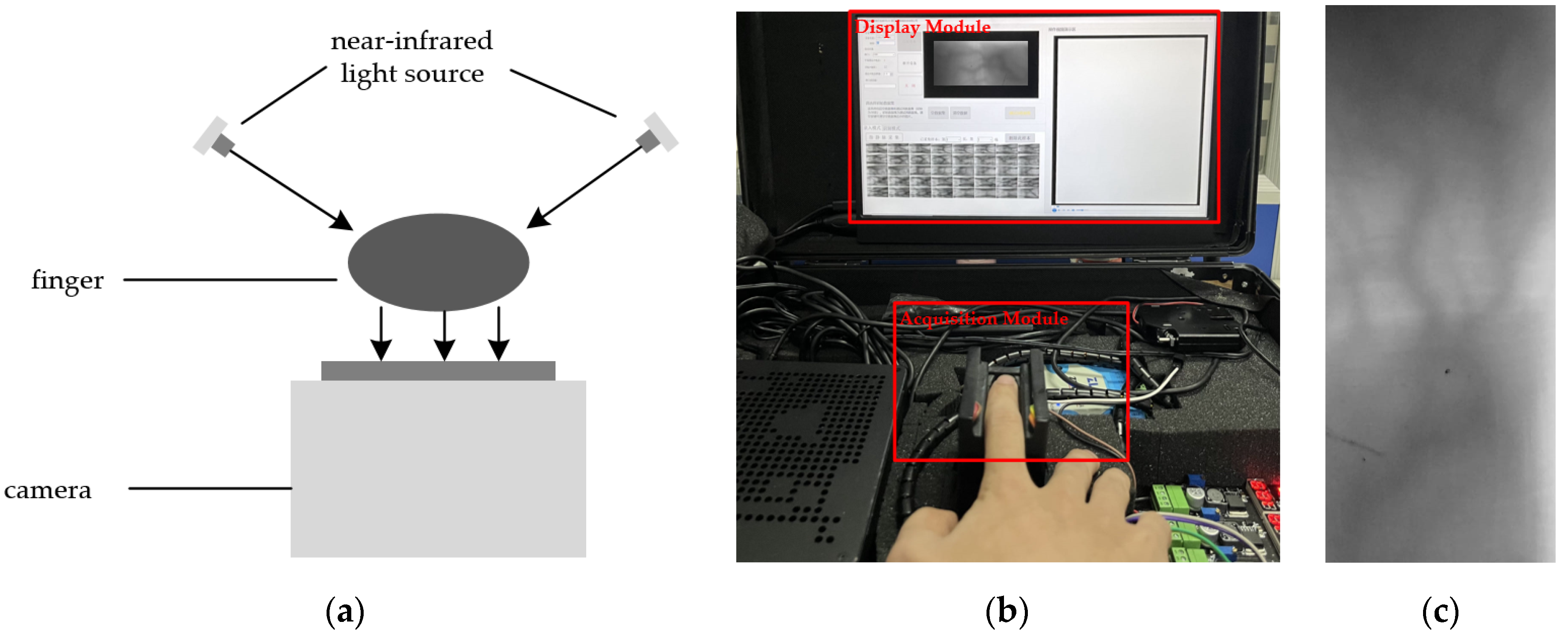
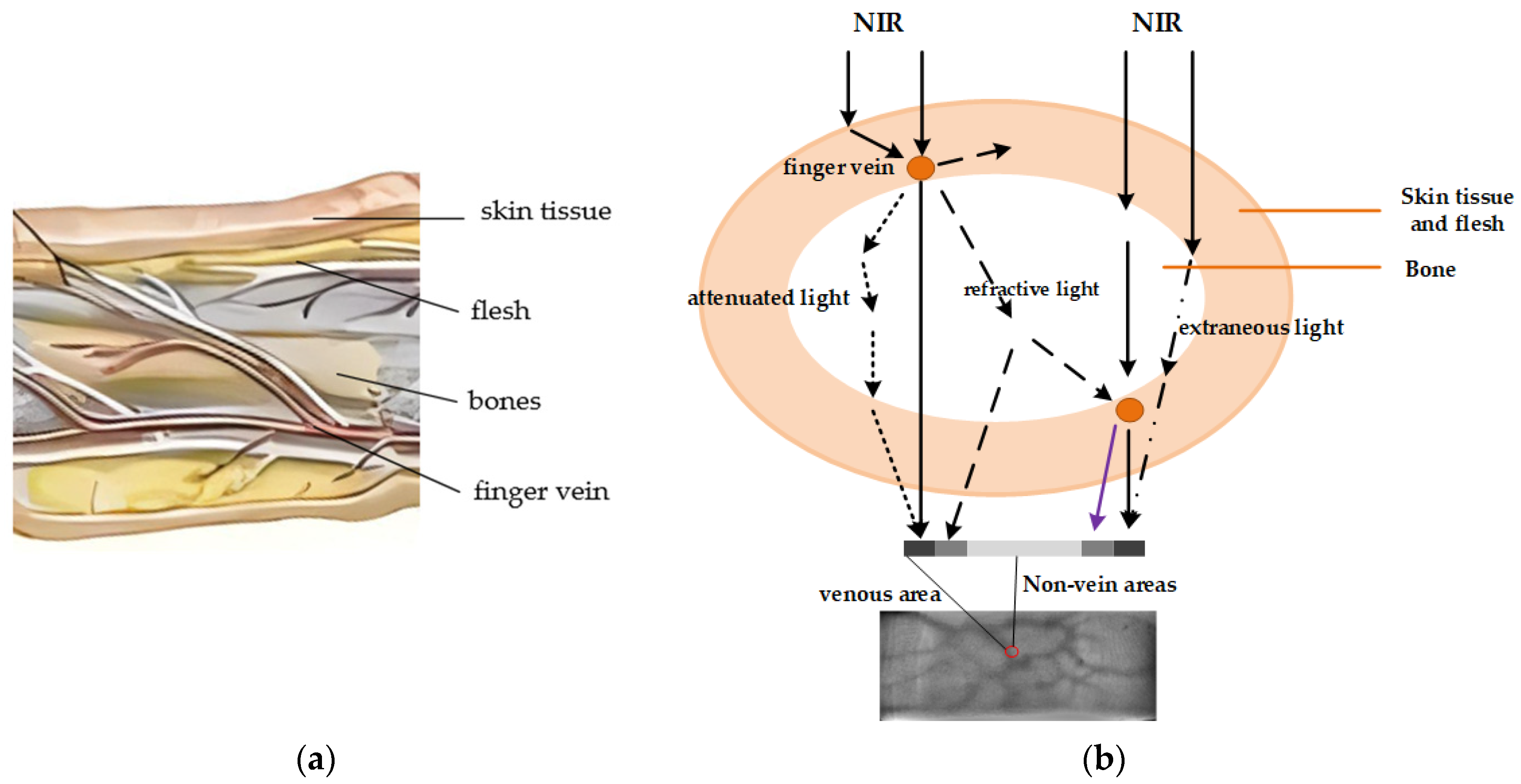




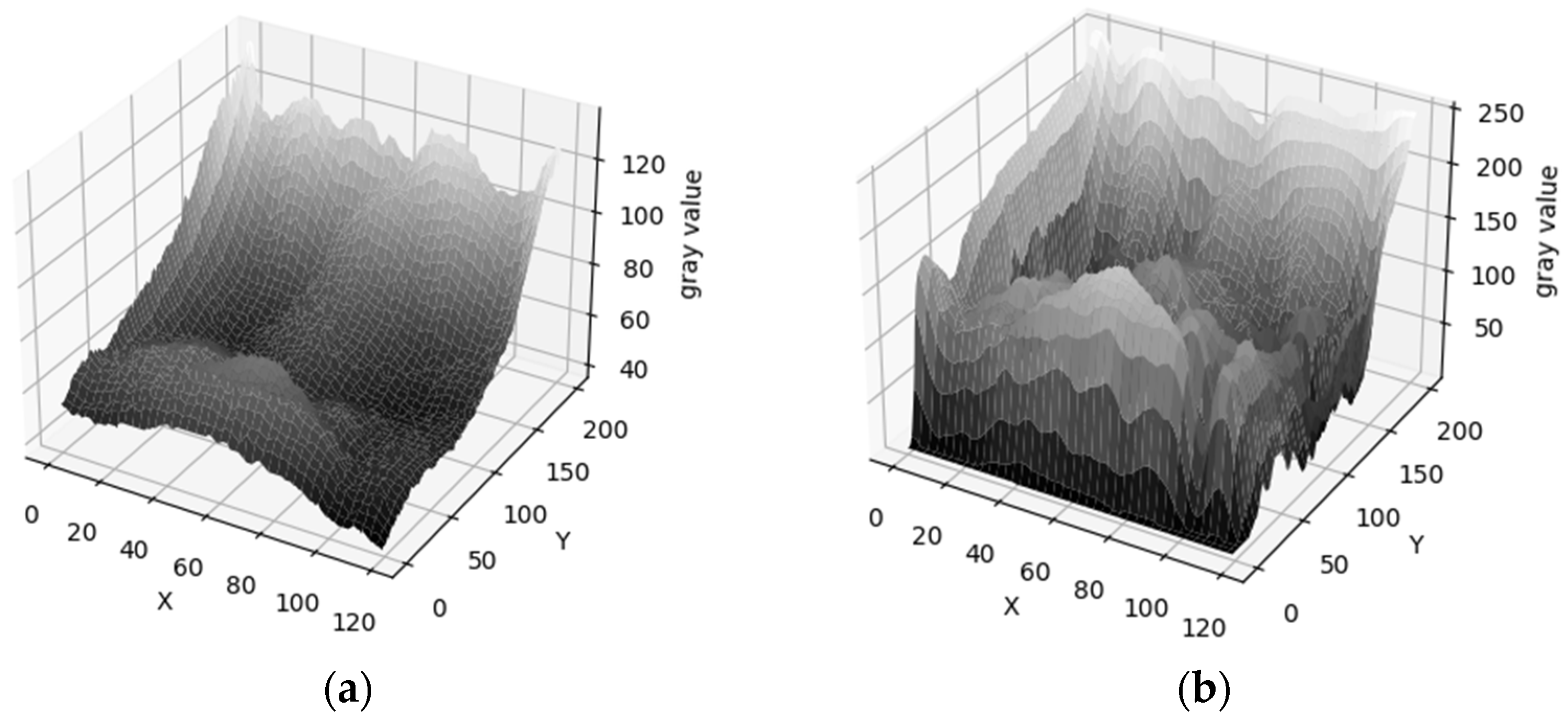
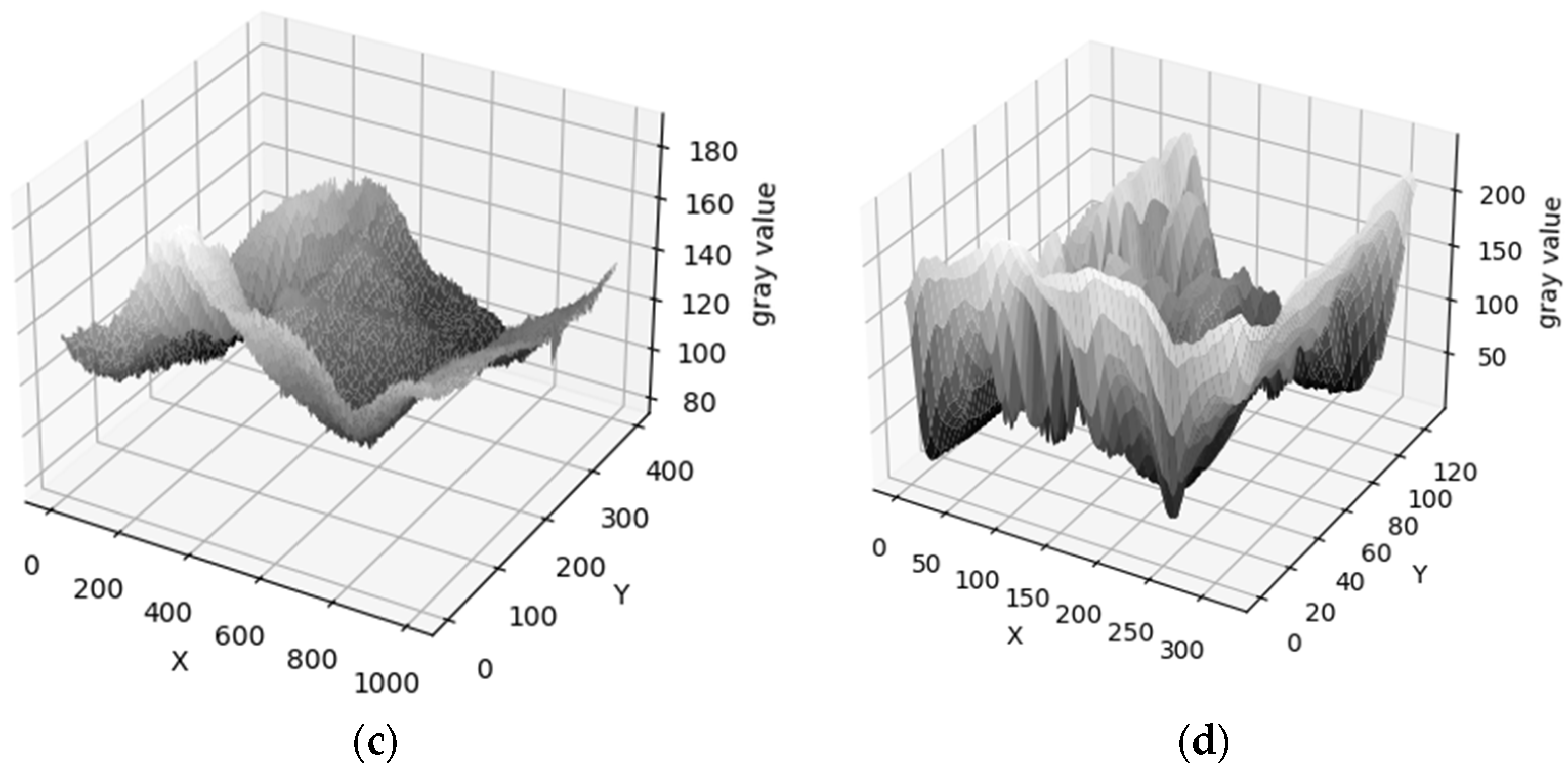
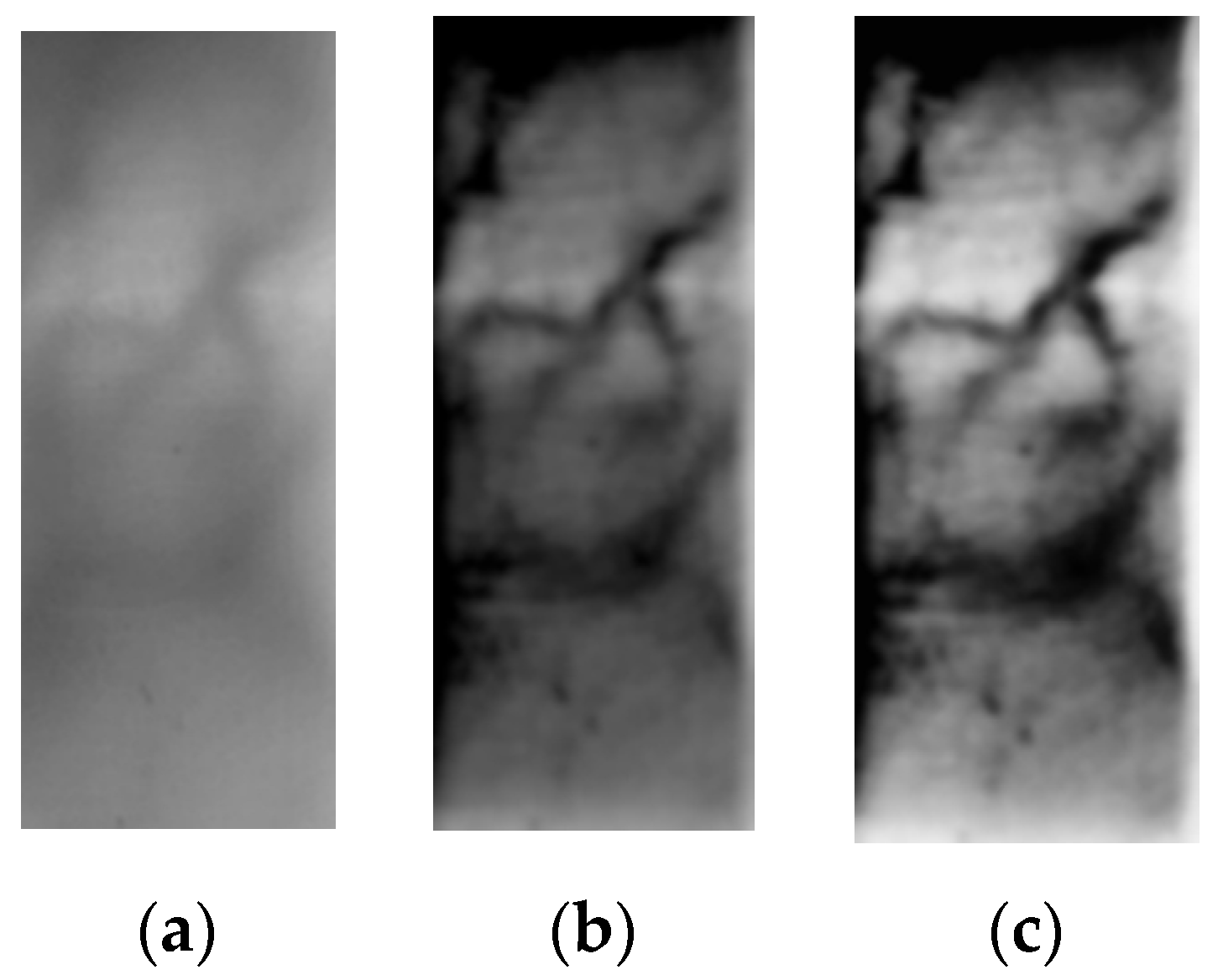

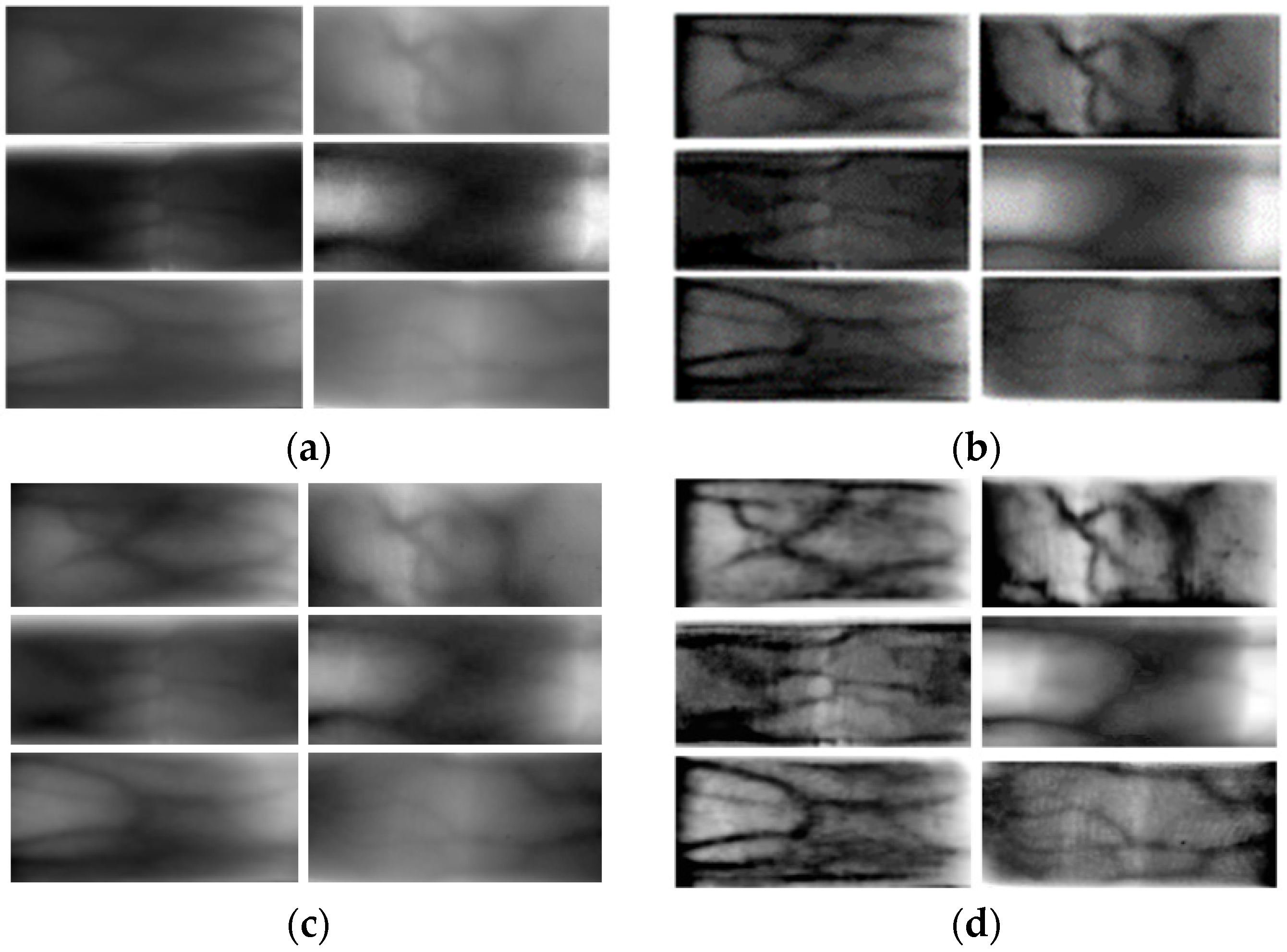
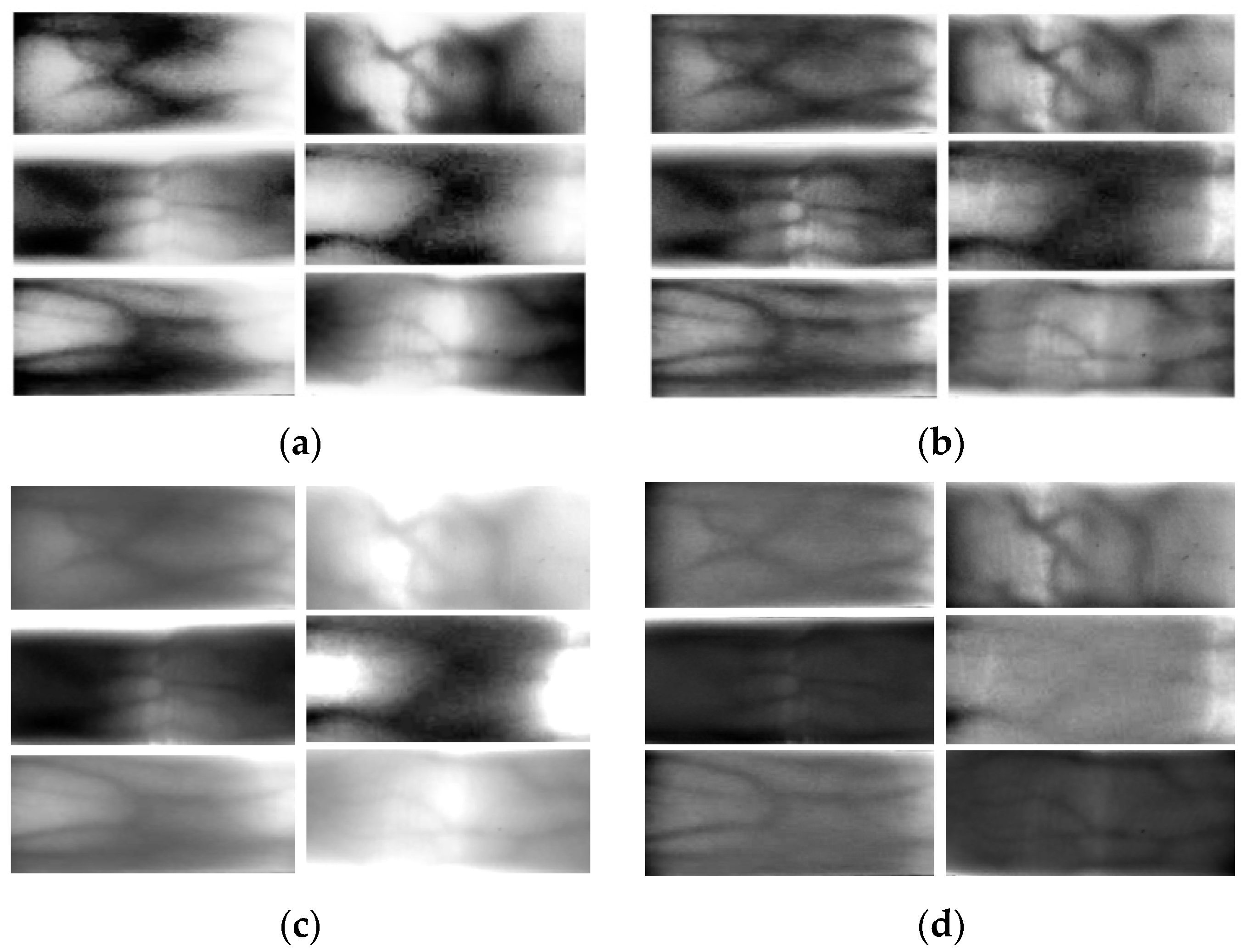
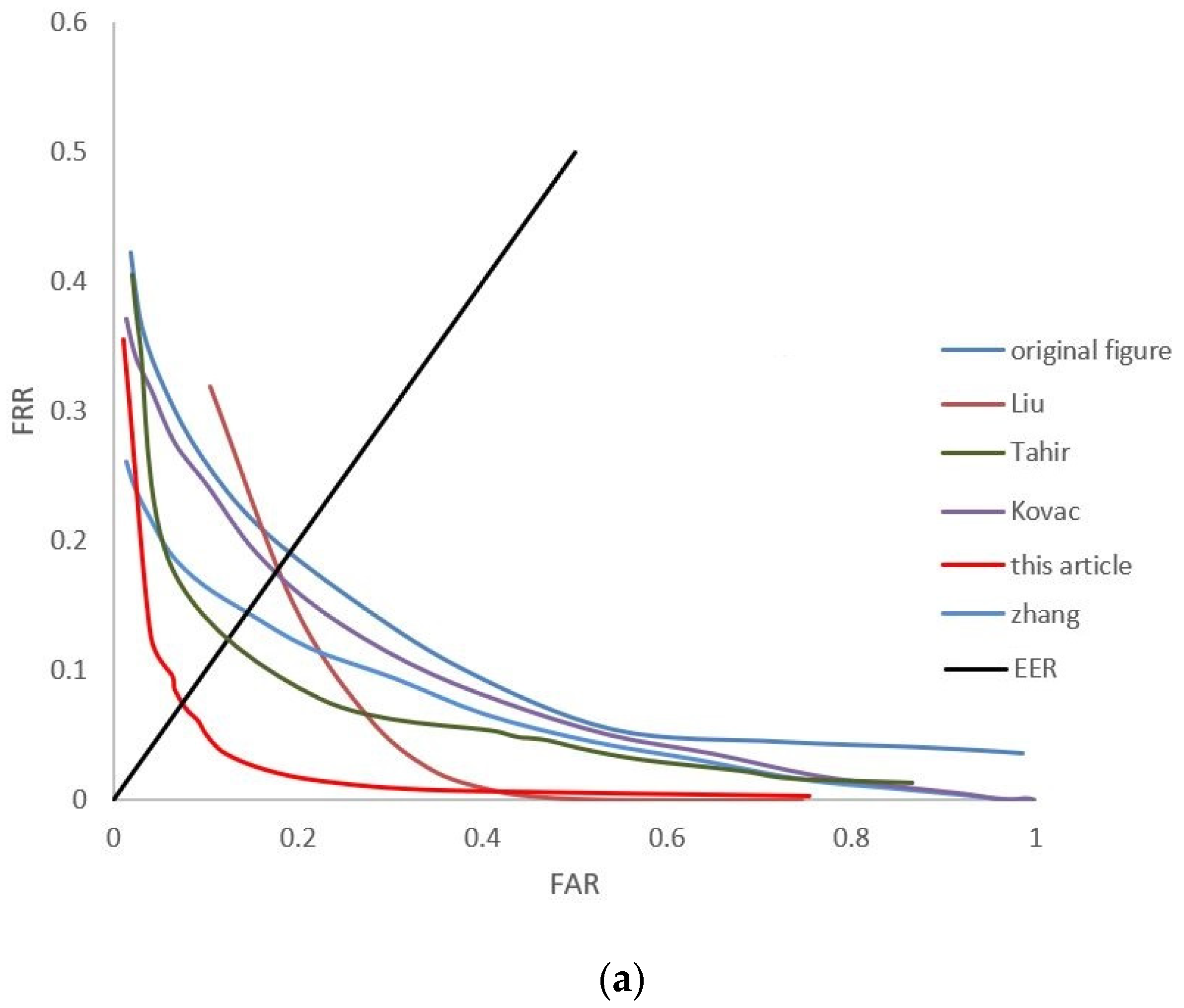
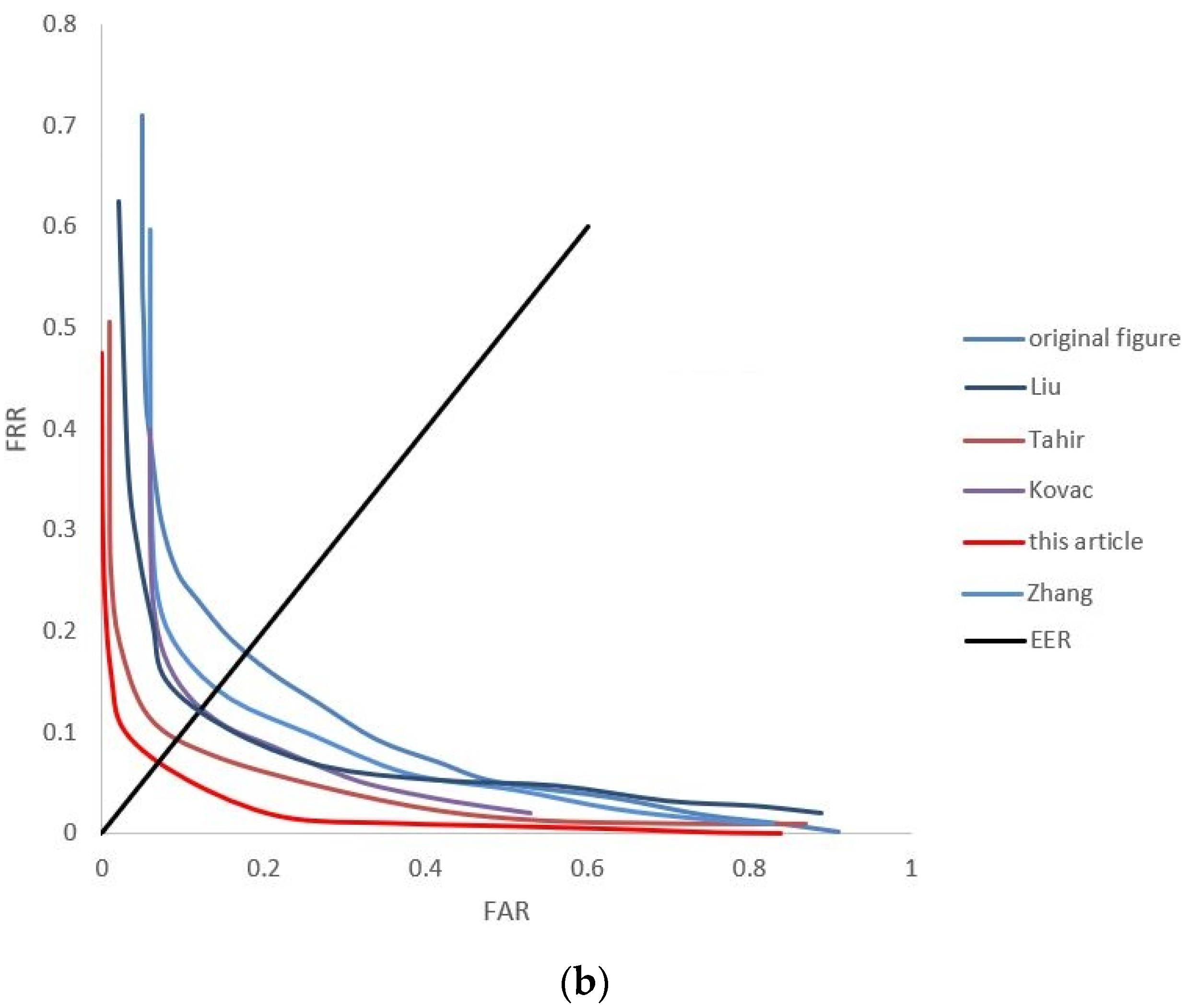
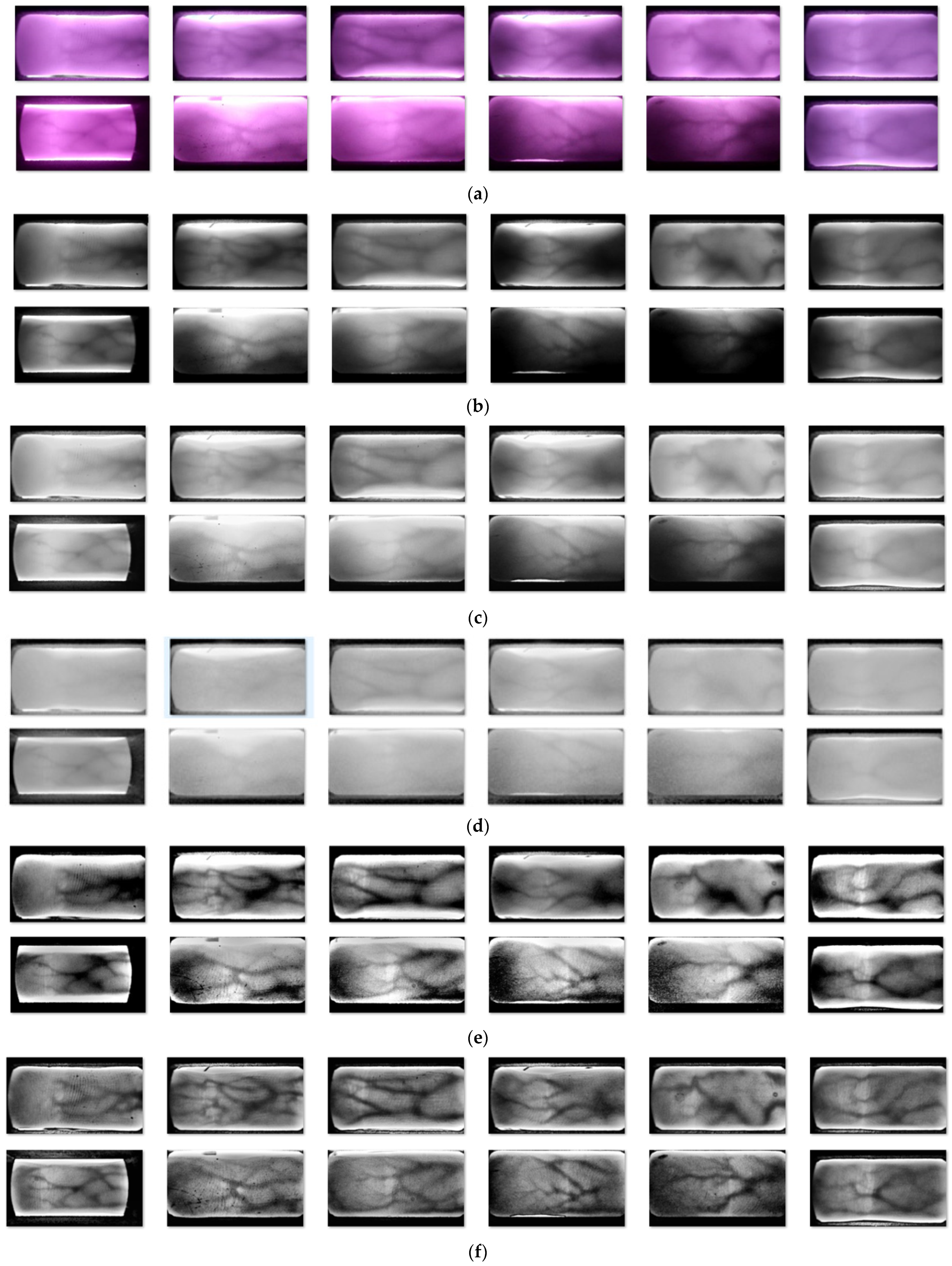
| Method | Image | |||||
|---|---|---|---|---|---|---|
| 1 | 2 | 3 | 4 | 5 | 6 | |
| raw image | 1 | 1 | 1 | 1 | 1 | 1 |
| Liu [16] | 0.76 | 0.88 | 0.58 | 0.90 | 0.74 | 0.91 |
| Tahir [19] | 0.53 | 0.78 | 0.48 | 0.72 | 0.66 | 0.83 |
| Kovac [23] | 0.84 | 0.92 | 0.87 | 0.91 | 0.88 | 0.93 |
| Zhang [24] | 0.82 | 0.87 | 0.85 | 0.92 | 0.78 | 0.88 |
| this article | 0.52 | 0.60 | 0.42 | 0.70 | 0.47 | 0.64 |
| Method | Image | |||||
|---|---|---|---|---|---|---|
| 1 | 2 | 3 | 4 | 5 | 6 | |
| raw image | 1 | 1 | 1 | 1 | 1 | 1 |
| Liu [16] | 3.93 | 4.96 | 1.40 | 1.35 | 4.37 | 4.73 |
| Tahir [19] | 5.05 | 3.77 | 1.12 | 1.25 | 4.41 | 3.19 |
| Kovac [23] | 0.86 | 0.47 | 0.76 | 0.66 | 0.78 | 0.55 |
| Zhang [24] | 1.12 | 2.33 | 1.45 | 0.98 | 2.21 | 0.89 |
| this article | 5.85 | 4.70 | 5.72 | 4.54 | 8.38 | 6.59 |
| Method | MSSIM | CII |
|---|---|---|
| raw image | 1 | 1 |
| Liu [16] | 0.792 | 3.623 |
| Tahir [19] | 0.665 | 3.255 |
| Kovac [23] | 0.913 | 0.698 |
| Zhang [24] | 0.842 | 1.322 |
| this article | 0.580 | 4.701 |
| Method | Raw Image | Liu | Tahir | Kovac | Zhang | This Article |
|---|---|---|---|---|---|---|
| Sift_flann | 0.735 | 0.539 | 0.814 | 0.547 | 0.634 | 0.88 |
| Lbp_svm | 0.647 | 0.726 | 0.686 | 0.578 | 0.633 | 0.744 |
| Resnet50 | 0.833 | 0.804 | 0.902 | 0.922 | 0.786 | 0.941 |
| Goognet | 0.864 | 0.863 | 0.961 | 0.804 | 0.884 | 0.966 |
| MAML | 0.862 | 0.861 | 0.855 | 0842 | 0.828 | 0.926 |
Disclaimer/Publisher’s Note: The statements, opinions and data contained in all publications are solely those of the individual author(s) and contributor(s) and not of MDPI and/or the editor(s). MDPI and/or the editor(s) disclaim responsibility for any injury to people or property resulting from any ideas, methods, instructions or products referred to in the content. |
© 2024 by the authors. Licensee MDPI, Basel, Switzerland. This article is an open access article distributed under the terms and conditions of the Creative Commons Attribution (CC BY) license (https://creativecommons.org/licenses/by/4.0/).
Share and Cite
Feng, D.; Feng, P.; Mao, Y.; Zhou, Y.; Zeng, Y.; Zhang, Y. A Degraded Finger Vein Image Recovery and Enhancement Algorithm Based on Atmospheric Scattering Theory. Sensors 2024, 24, 2684. https://doi.org/10.3390/s24092684
Feng D, Feng P, Mao Y, Zhou Y, Zeng Y, Zhang Y. A Degraded Finger Vein Image Recovery and Enhancement Algorithm Based on Atmospheric Scattering Theory. Sensors. 2024; 24(9):2684. https://doi.org/10.3390/s24092684
Chicago/Turabian StyleFeng, Dingzhong, Peng Feng, Yongbo Mao, Yang Zhou, Yuqing Zeng, and Ye Zhang. 2024. "A Degraded Finger Vein Image Recovery and Enhancement Algorithm Based on Atmospheric Scattering Theory" Sensors 24, no. 9: 2684. https://doi.org/10.3390/s24092684
APA StyleFeng, D., Feng, P., Mao, Y., Zhou, Y., Zeng, Y., & Zhang, Y. (2024). A Degraded Finger Vein Image Recovery and Enhancement Algorithm Based on Atmospheric Scattering Theory. Sensors, 24(9), 2684. https://doi.org/10.3390/s24092684






